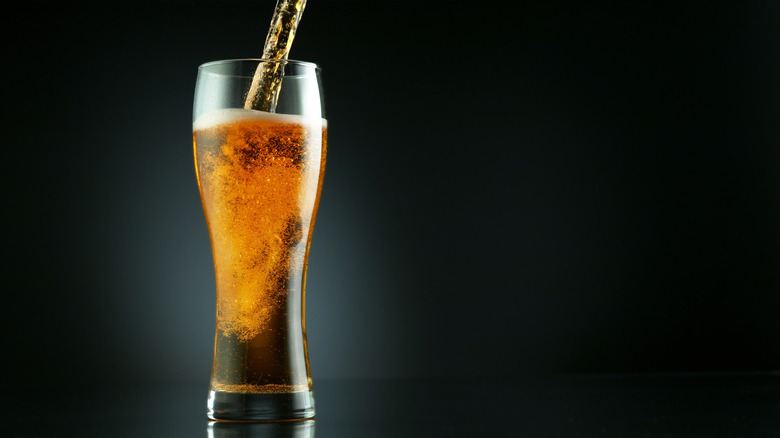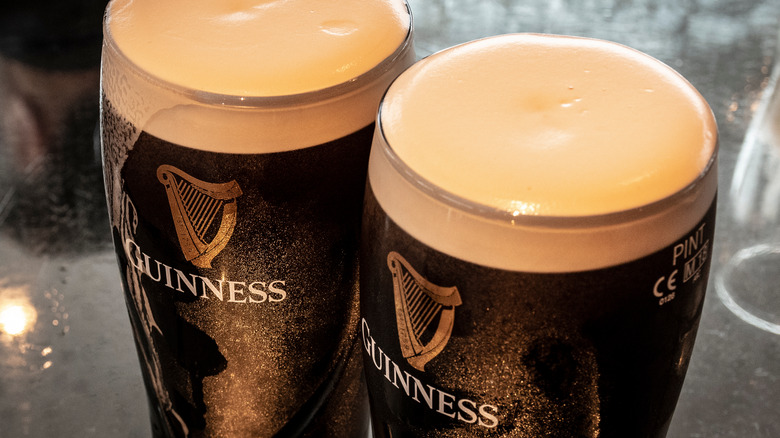What Does It Mean If Your Beer Bubbles Downward When Poured?
If you have a few too many beers, your perception of physics might feel slightly altered. If you notice something odd happening in your first glass of the night though, that might be something else.
According to Insider, the bubbles in most beer are made up of carbon dioxide. And, because those bubbles are lighter than the beer around them, they tend to float to the surface. However, in stouts, like Guinness, whose bubbles contain nitrogen, the bubbles often head in another direction.
As the Insider explained, nitrogen gas creates smaller bubbles that give the beer its signature creamy texture, but also make it more affected by physical forces. These little balls of gas are so temperamental that the brewers have developed a six-step process to pour the perfect pint of Guinness from the bar taps, which includes proper cup selection and an ideal angle for the perfect pour.
Communities devoted to shaming the worst of these pours have popped up online as well.
The bubbles are dragged down by friction
The reason for this sudsy abnormality is mostly due to friction. The Royal Society of Chemistry found that during what they call "lunchtime recreation," there are still plenty of bubbles rising in the glass, just not ones we can see. The walls of the glass create more drag on the bubbles which slows them down, and leaves those in the center of the glass with more momentum to rise to the top. Once they get there, they have to go somewhere, and because of that added drag on the sides, they start to fall down the walls of the glass.
In fact, Samuel Adams claims on its official website that its signature pint glass is laser etched in the bottom to help those bubbles rise to the top. Guinness' signature tulip-shaped pint glass, on the other hand, might actually be making things worse. According to one study, the shape of the Guinness pint actually helps draw more of those smaller nitrogen bubbles downward while an inverted-shaped glass had the opposite effect. William Lee, who took part in the study, even told Insider that the perfect glass for a Guinness would be something more akin to a martini glass which would let the bubbles settle quicker and eliminate the need for the six-step pour.
While purists can stick to their slow methods, in an ever thirstier world it might pay to be able to draw a quicker pint.

